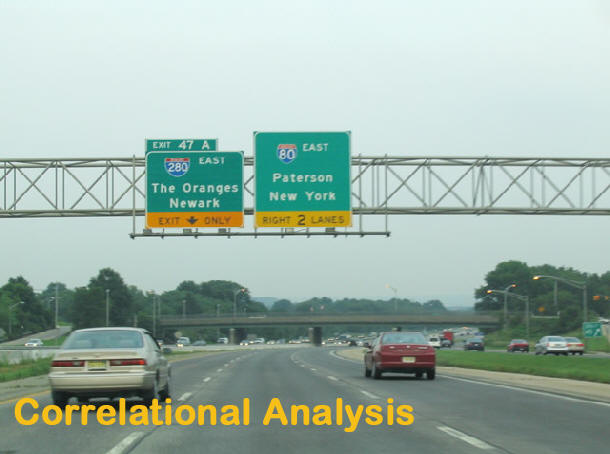
Educational Attainment
The importance of an education can be seen in the incidence of HIV contraction. In the New Jersey Health curriculum most HIV/AIDS prevention education takes place during high school. So, hypothetically, the greater incidence of citizens that did not complete high school should associate with a higher cumulative AIDS rate. The association of AIDS rate to educational attainment may imply a connection to poverty, inadequate access to healthcare, and AIDS awareness. The correlation coefficients relating the percentage of the population that had received some high school education but had not graduated and the AIDS rate were determined by race and gender. All of the correlations calculated for male and female whites, blacks or African-Americans, and Hispanics were significant positive associations.

James Caldwell High School in West Caldwell, www.cwcboe.org
The strongest of these associations were in black or African-American males, 0.934 (Figure 11), and black or African-American females, 0.886 (Figure 12). When comparing the maps for these educational trends, they appear to be very similar, further associating the impact of a complete high school education on HIV awareness (Figure 13, Figure 14). These statistics paralleled research findings that have concluded that black and African-American females and males are the highest risk groups in Essex County for the contraction of HIV.
Other significant associations exist between white (Figure 15) and Hispanic (Figure 16) females, 0.746 and 0.679, respectively. The correlations were slightly weaker for their male counterparts, with the white male coefficient at 0.725 (Figure 17) and the Hispanic male coefficient at 0.639 (Figure 18). When looking at the association between white females without a high school diploma and AIDS rate, Irvington is an outlier; the AIDS rate is not nearly as high as the rest of the numbers would predict for such a lack of education (Figure 19). The presence of this outlier suggests that in Irvington, white females are probably not at the highest risk for HIV/AIDS. Only slight differences are observed between the educational maps of Hispanic females (Figure 20), white males (Figure 21), and Hispanic males (Figure 22) because all three correlations are similarly strong positives. Gender was a significant factor because there is a high incidence of contraction of HIV through heterosexual contact in Essex County.

Montclair High School, Montclair
The successful completion of higher education showed expected significant negative correlations in both genders of whites and blacks or African-Americans. The data for percentage of the specified population over 25 which had obtained a Bachelorís degree was compared to the cumulative AIDS rates. For all 4 groups, significant negative correlations were obtained. The strongest association was that of white males, -0.768 (Figure 23), which was a good deal stronger than that of white females, -0.670 (Figure 24). However, in blacks and African-Americans, the association of Bachelorís degrees to AIDS rates was stronger in females, -0.701 (Figure 25), than in males, -0.610 (Figure 26). The map of white males with Bachelorís degrees is a striking example of the clear trends across the county from west to east (Figure 27). For correlation between percentage of Black males with a Bachelorís degree and AIDS rate, Nutley was an outlier with a very high percentage of males with Bachelorís degrees and the lowest AIDS rate (Figure 28).